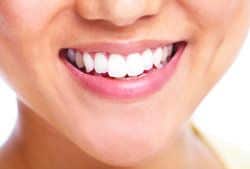Experiencing Gum Recession? Treatment Can Help
by Robert Rapisarda
Healthy gums are an important part of a healthy smile, which is why it can be frustrating when gums start to recede. Understanding the causes of gum recession can help you prevent the condition from occurring; or, if you’re already experiencing gum recession, treatment can help! As a skilled cosmetic dentist, Dr. Robert Rapisardaprovides patients at his Boston practice with gum recession treatment to restore their smiles and increase their confidence.
What Is Gum Recession?
When gums move away from teeth, causing the teeth to appear longer and occasionally exposing the roots, the condition is known as gum recession. It’s important to address gum recession as soon as you notice symptoms – left untreated, bacteria can accumulate in the gaps created between the teeth and gums, causing periodontal disease.
Gum Recession Causes
Your health, lifestyle, and genetics all contribute to your likelihood of experiencing gum recession. Some people worry that dental crowns, which are protective caps placed over the teeth, increases the risk of receding gums, but gum recession affects both natural and restored teeth.
Causes of gum recession include:
- Periodontal disease. Gum recession is one of the first signs of periodontal disease, also known as gum disease. Left untreated, gum disease can cause serious damage to your teeth, gums, and bone structure, so it’s important to see your dentist as soon as you notice symptoms.
- Brushing too hard. Using too much force when you brush your teeth or brushing too often, can irritate tender gums. If your gums are sensitive, switching to a soft-bristled toothbrush can help. To prevent gum recession, brush thoroughly twice a day and ask your dentist to recommend a toothbrush.
- Not flossing enough. By not flossing regularly, you increase your risk of gum recession. Plaque can harden into tarter, which builds up between your teeth, causing gums to recede.
- Grinding your teeth. Chronic clenching and grinding, often a result of TMJ disorder, puts extra pressure on certain teeth. The strain can cause gums to recede.
- Smoking. Using tobacco increases the amount of plaque on your teeth, which, in turn, leads to gum recession and periodontal disease.
- Crooked teeth. When teeth aren’t straight, bacteria can build up in the crevices a toothbrush can’t access. The result? An increased risk of gum disease and recession.
- Pregnancy. Women are more prone to gum recession during periods of intense hormonal shifts, such as during pregnancy or menopause.
- Genetics. Even with the best dental care, some people are simply more genetically prone to developing gum recession.
Symptoms
Gum recession is easily treated when detected early. Contact your dentist if:
- Your tooth is sensitive
- Your tooth appears longer than usual
- You notice a ridge on the surface of your tooth, near the gum line
Deep Cleaning
When diagnosed early, gum recession can often be treated with a deep cleaning procedure, also known as tooth scaling and root planing. During a deep cleaning, your dentist will remove the plaque and tartar found beneath the gum line, and smooth out the textured surface of the tooth’s root to prevent bacteria from building up in the future.
Gum Surgery
In severe cases, surgery may be necessary to treat gum recession. Your dentist may perform:
- Pocket depth reduction. Your dentist will pull back the affected gum tissue to remove bacteria that has accumulated below the gum line. By stitching the gum back into place, your dentist ensures that the tooth root is properly covered, and that there are no gaps where bacteria can build up.
- Soft tissue graft. When a tooth root has been exposed, your dentist may take healthy tissue from another area, such as an unaffected section of gum or the roof of your mouth, and stitch it to the affected area to provide coverage.
- Regeneration. Used in the most severe cases, regeneration treats gum disease that has damaged the underlying bone structure. First, the gum tissue is pulled back in order to remove bacteria; then, a graft is placed over the area to stimulate new bone and tissue growth.
Are Your Gums Receding?
If you’re experiencing gum recession, it’s important to see a dentist as early as possible. With an early diagnosis, receding gums are highly treatable. To learn more or schedule a consultation, contact the office of Dr. Robert Rapisarda today.
Experiencing Gum Recession? Treatment Can Help Read More »

